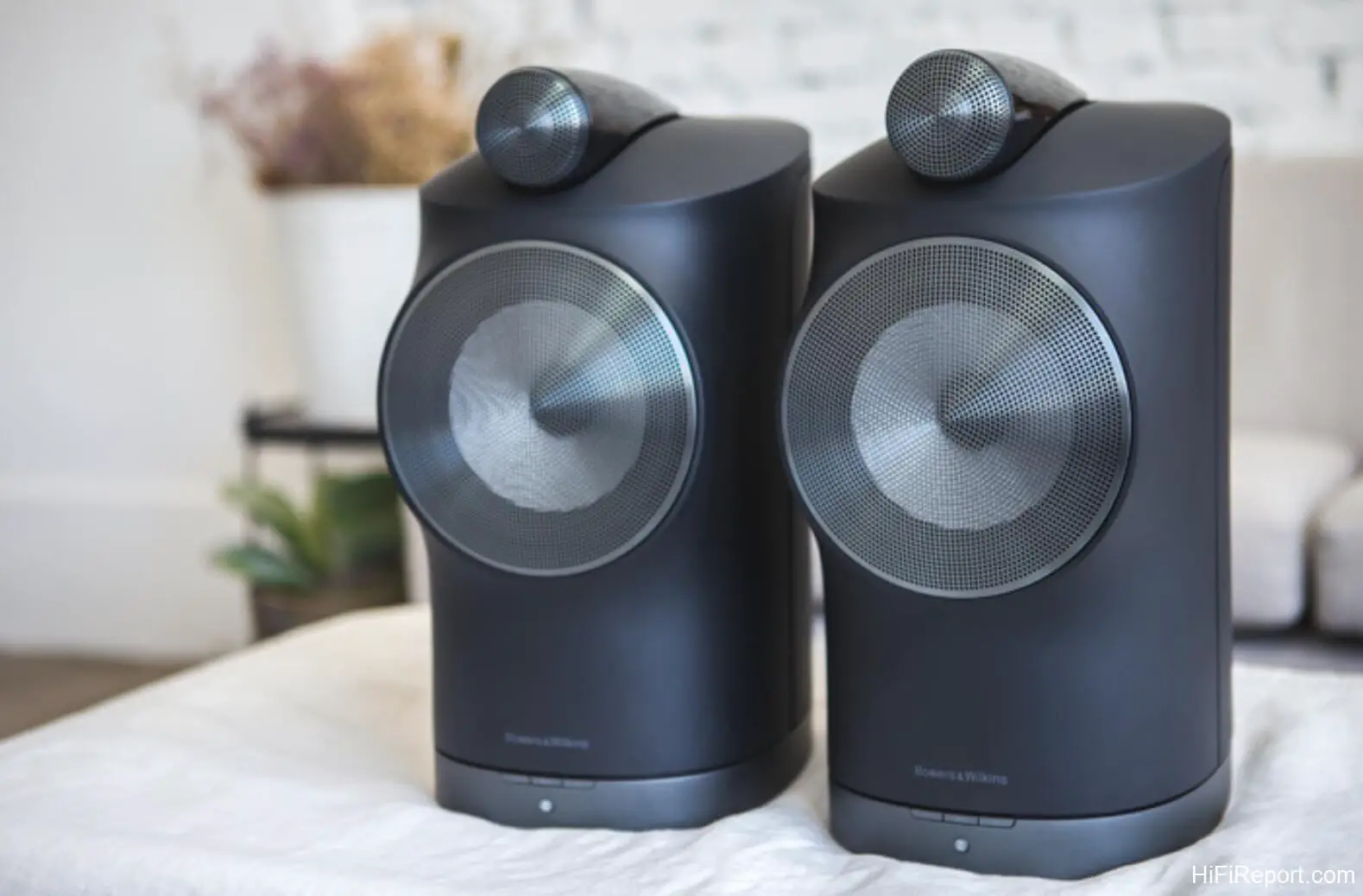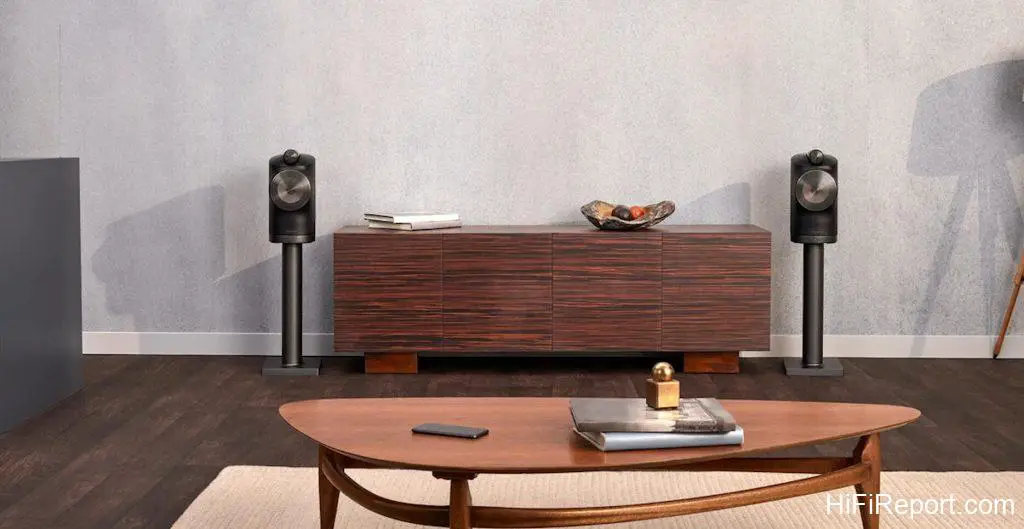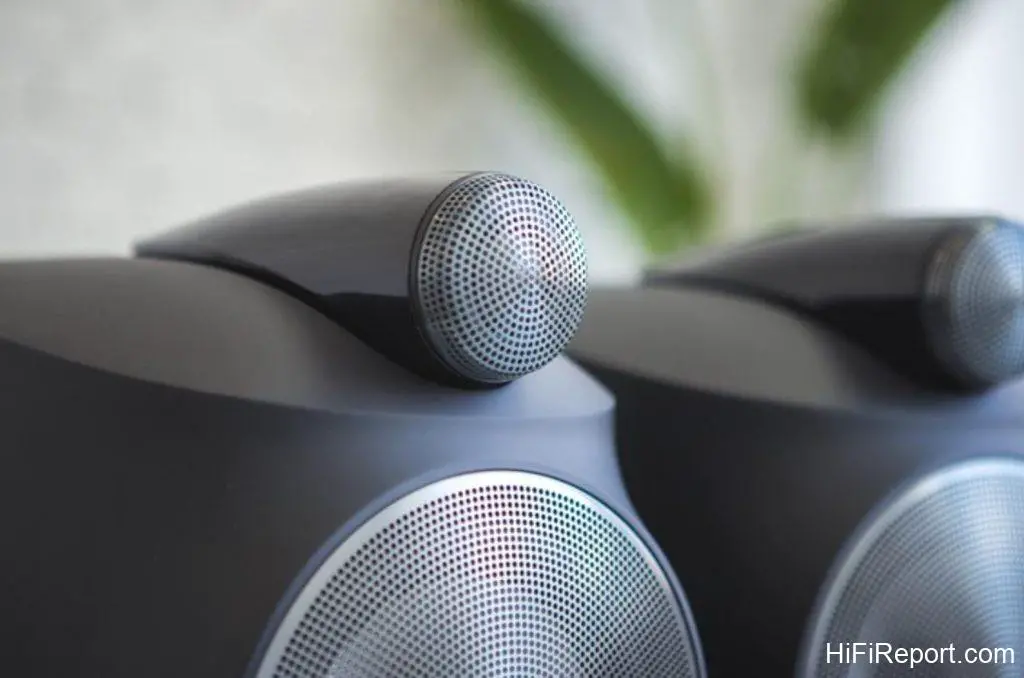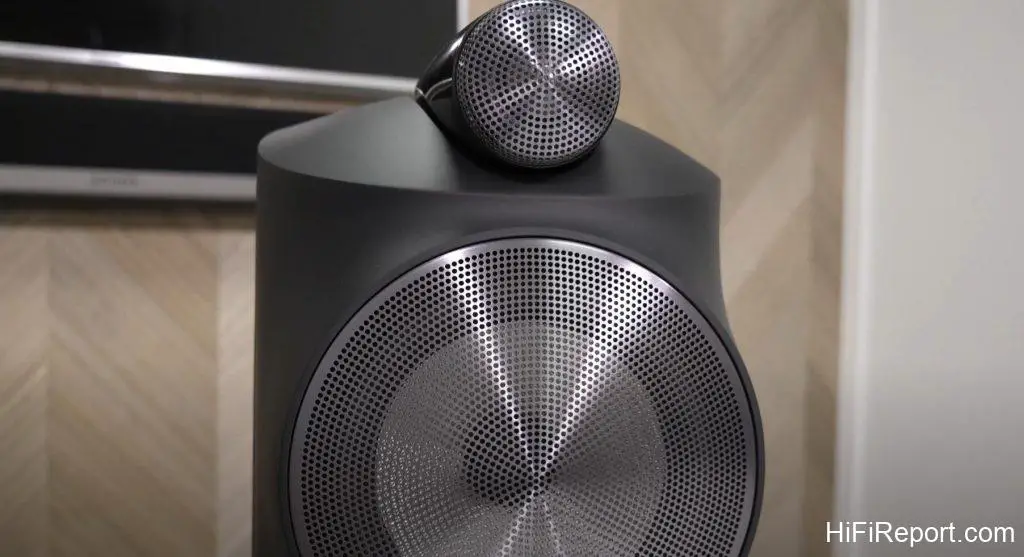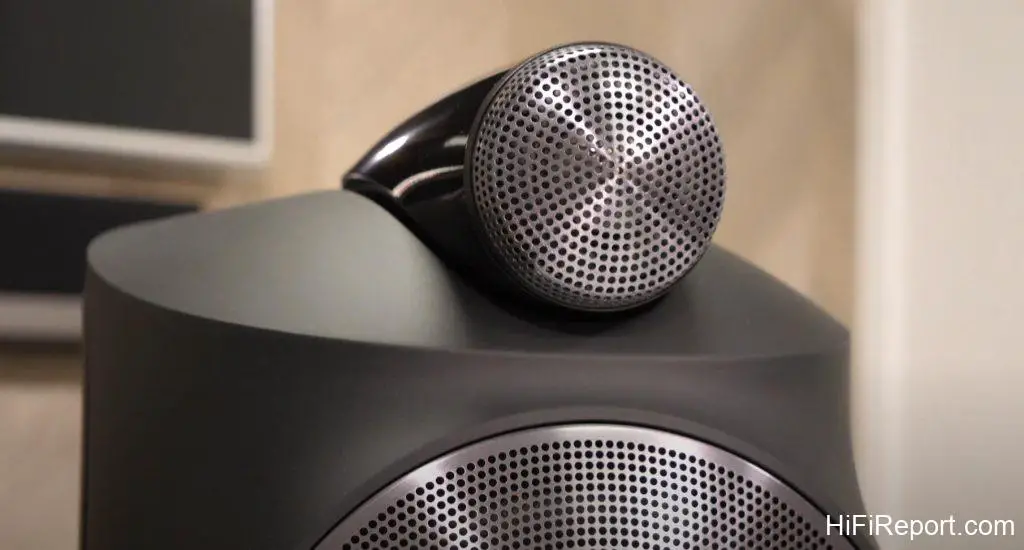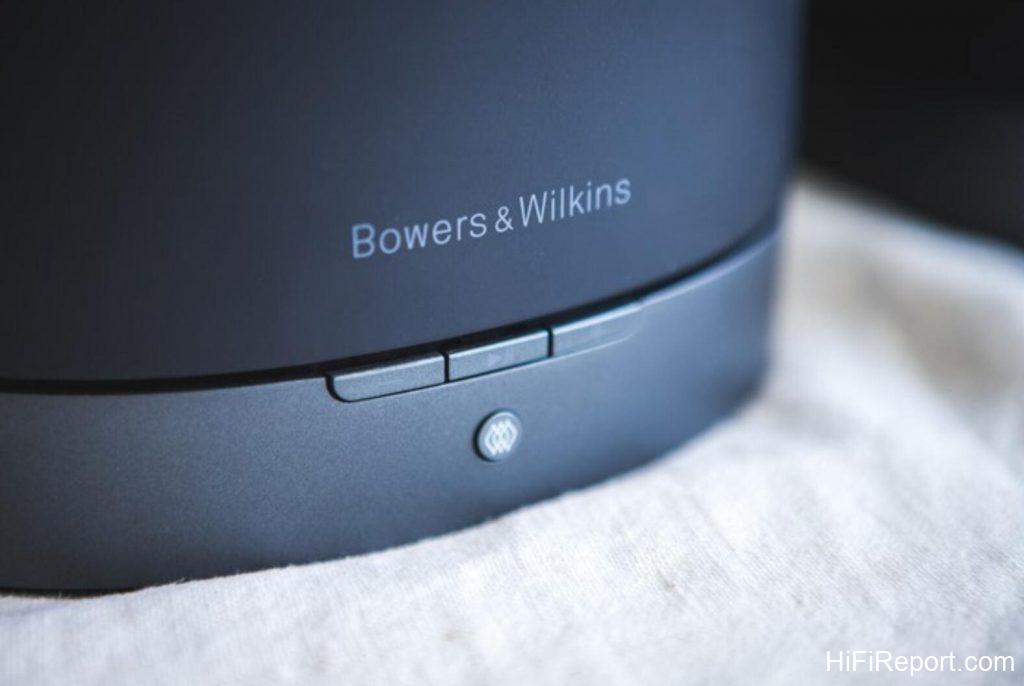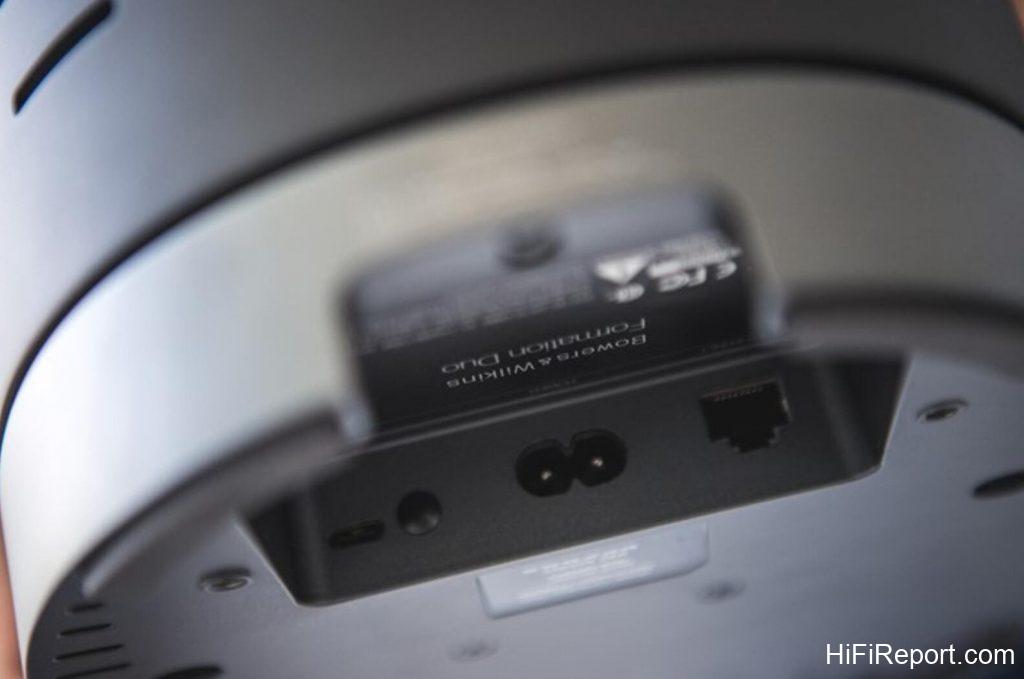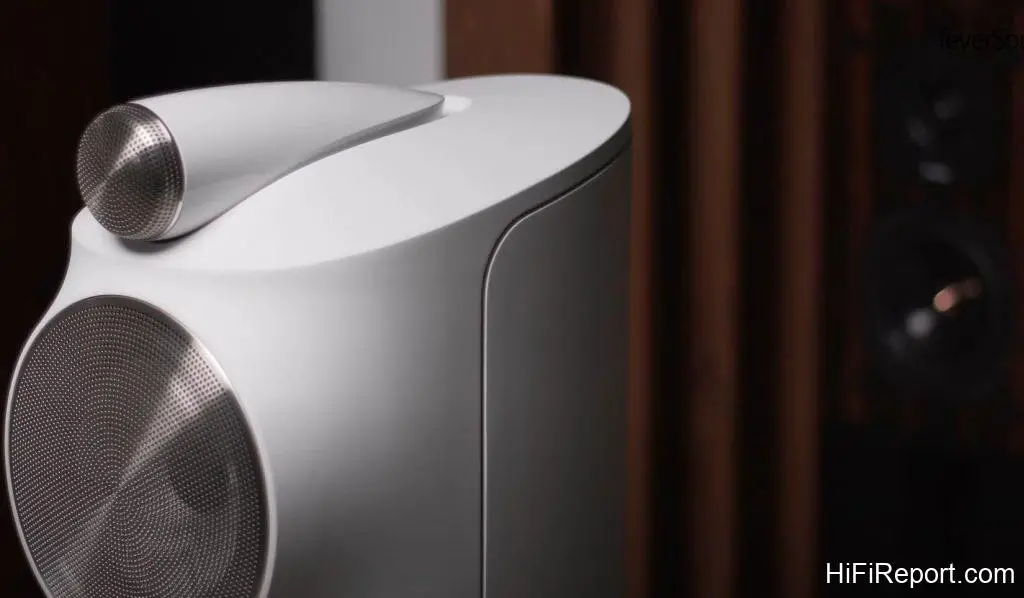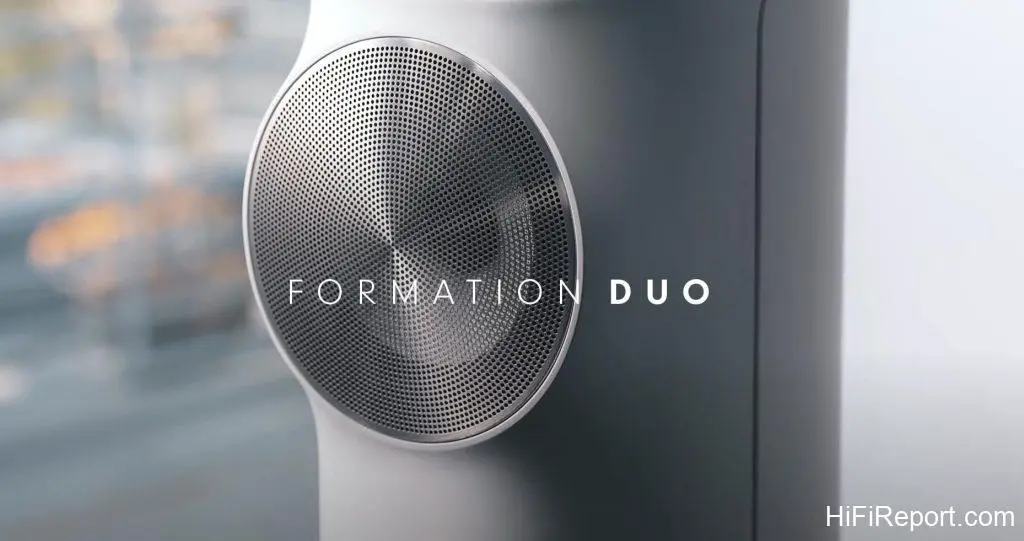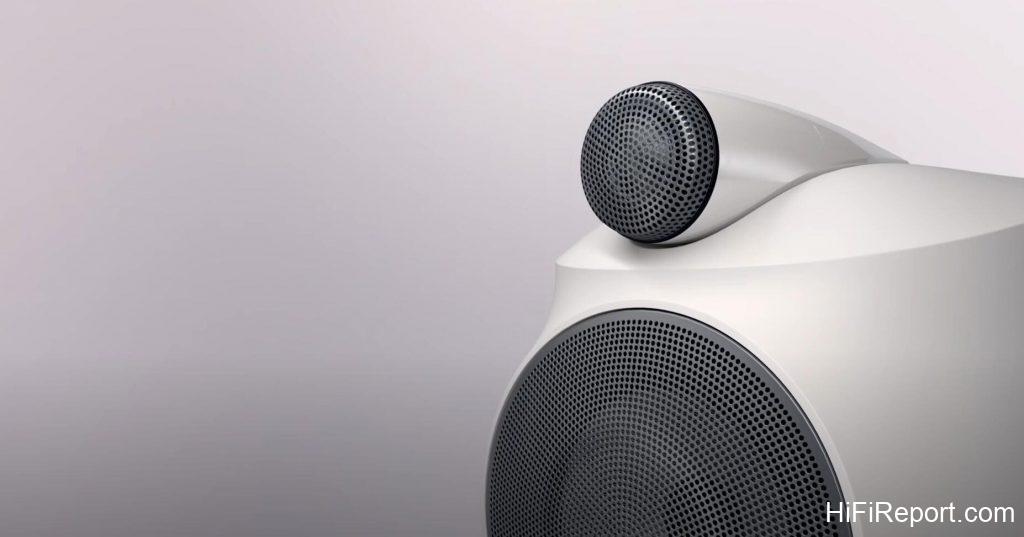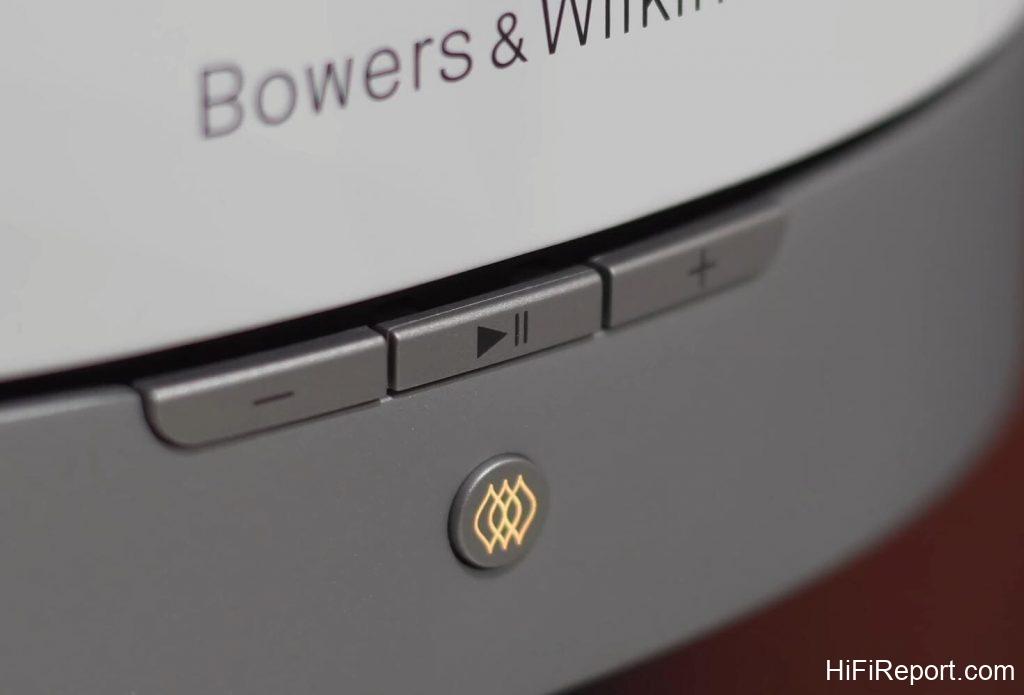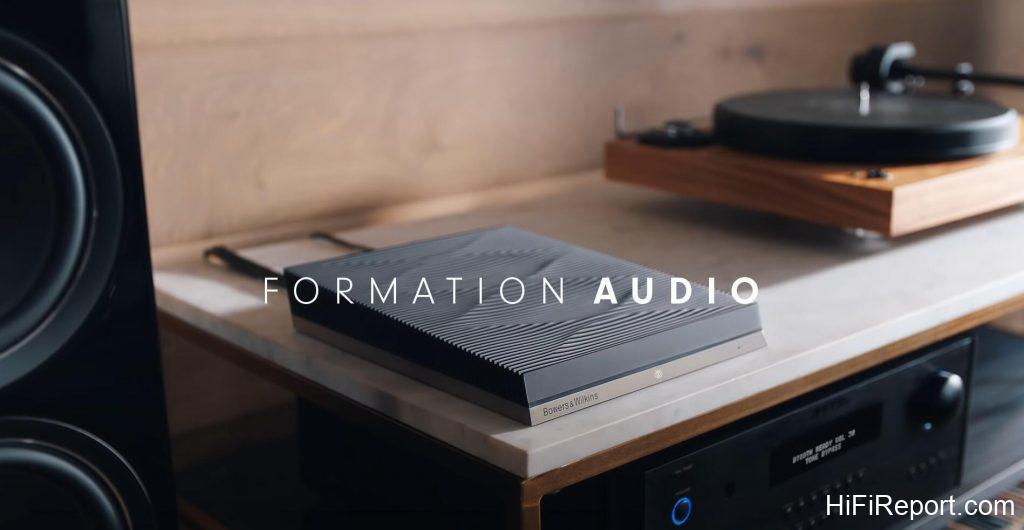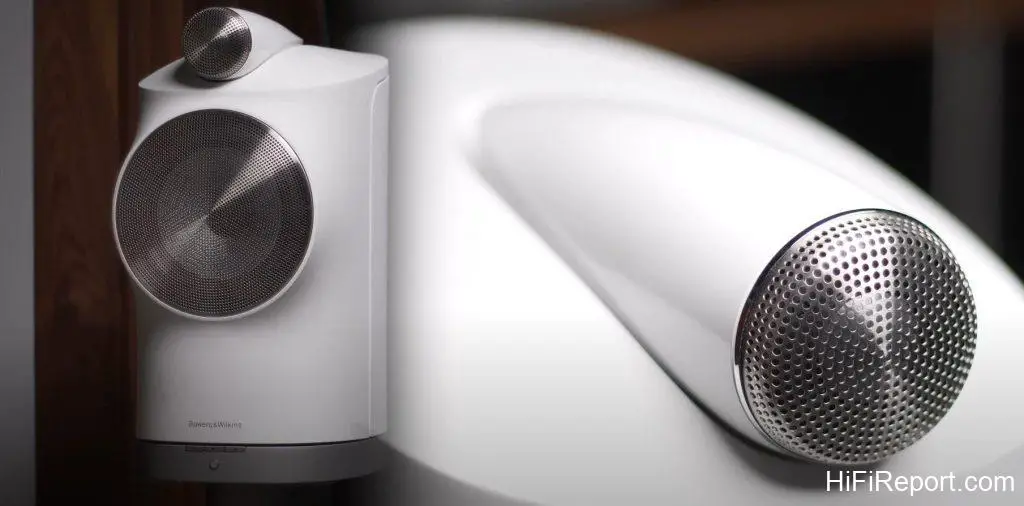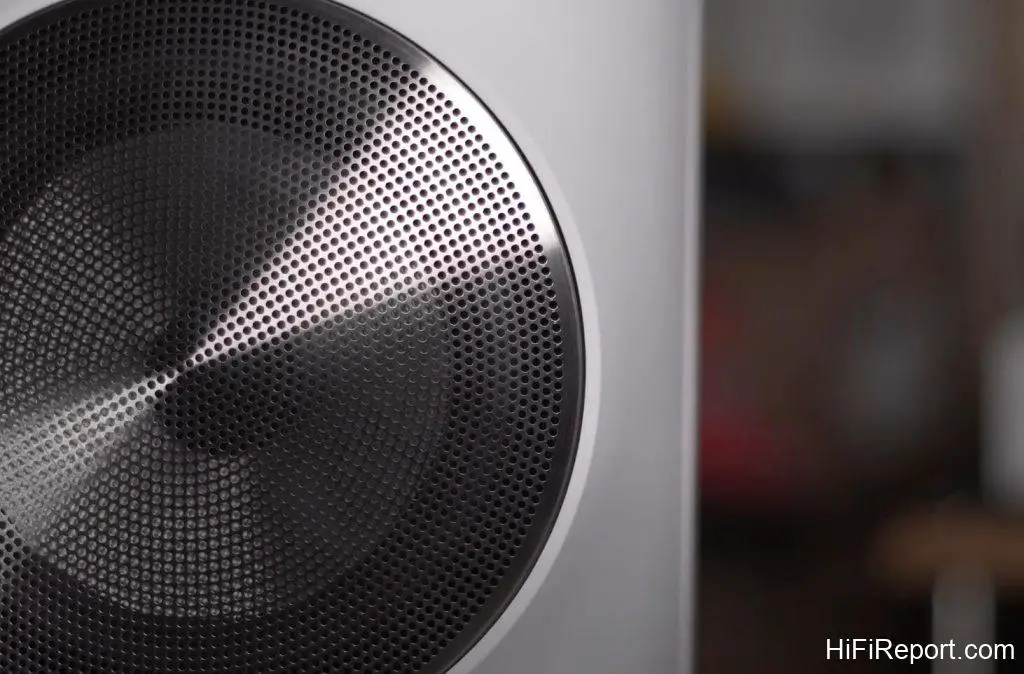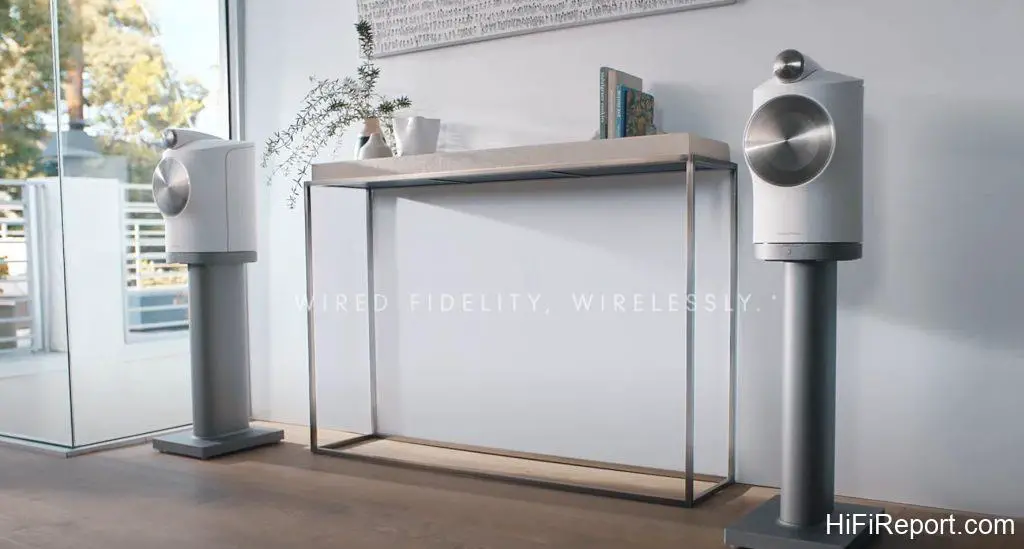Bowers & Wilkins Formation Duo Review
As a renowned brand in the Hi-End audio field, Bowers & Wilkins is an absolute classic, having created numerous unforgettable speakers for audiophiles, including the B&W 801.
The Bowers & Wilkins Formation series is the annual highlight of this British audio manufacturer. The series includes bookshelf speakers, all-in-one stereo speakers, a soundbar, a subwoofer, and wireless audio sources. In this review, we’ll focus on the Formation Duo, one of the higher-end bookshelf speaker models in the series.
The new Formation series is crafted by Bowers & Wilkins using their unique Formation wireless technology. For this review, let’s first look at Formation wireless technology. This technology allows different speakers within the Formation series to maintain a connection speed as low as 1 microsecond without affecting the home network bandwidth.
This ensures that users can move between different spaces in their homes and experience uninterrupted audio performance while listening to other models within the Formation series. In the following sections, we’ll interview a Lo-Fi House style designer who has experienced the Formation Duo, and they will share their listening impressions.
Wireless speakers differ from conventional audio products in that connection stability and transmission latency are crucial factors beyond sound quality. B&W has integrated the EXCLUSIVE FORMATION wireless transmission technology into the Formation series to address these two issues.
This technology ensures that all indoor products within the same Formation series have a sound timing accuracy as low as 1 microsecond, equivalent to 1/1,000,000 seconds. Yes, you read that right—all Formation series products can connect in a parallel rather than a serial manner, meaning they form a multi-point connection rather than a chain of one-to-one connections.
As a result, each Formation speaker can create a surround sound configuration or be part of a multi-room system. Their wireless transmission specification is PCM 24bit/96kHz, achieving Hi-Res audio standards.
Design
In this review, we’ll test the Bowers & Wilkins Formation Duo bookshelf speaker system, the flagship model in the current Formation series. It heavily incorporates soundbox technology from the brand’s flagship 800 series, with a teardrop-shaped cabinet sure and an independent tweeter module reminiscent of the 805 D3 variations.
This design effectively reduces the problem of resonance interference commonly found in traditional square-shaped enclosures. Regarding driver configuration, the top of the cabinet houses the tweeter, which is structurally separated from the mid-bass driver, effectively resolving the issue of interference between mid-bass and high-frequency sound waves within the same chamber.
The Bowers & Wilkins Formation Duo encloses polypropylene/wood composite material. It features a dual-panel design with a buffering material in between and a unique shape that significantly reduces resonances during speaker operation, providing users with distortion-free audio performance.
On the front of the cabinet, you can see the 6.5-inch mid-bass driver, also crafted using the exclusive Continuum diaphragm technology. This diaphragm technology, another classic and excellent innovation from Bowers & Wilkins after the Kevlar diaphragm, features a woven coating surface that effectively solves the problem of cone break-up during the operation of cone drivers.
This enables the mid-bass to deliver high-quality sound with minimal distortion and offers a more lively transient response, resulting in a dynamic and powerful audio performance. Each Formation Duo has two 125W digital amplifiers, driving each driver unit separately.
The Formation Duo adopts a sealed cabinet design with no bass reflex ports on the front or back of the cabinet. As a wireless transmission system, it minimizes the number of physical interfaces on the cabinet. Each Duo speaker has an integrated active amplifier featuring 125W for each channel to ensure user-friendly and intuitive basic functionality.
On the front of the cabinet, below the play/pause and volume control buttons, and at the bottom, there is a pairing button for wireless network setup within the Formation series.
You’ll find the power cord, RJ45 network port, and a USB port for speaker firmware upgrades or engineering diagnostics at the back of the speaker.
Bowers & Wilkins emphasizes simplicity and ease of use with the Formation series, making high-quality audio accessible. Therefore, the setup and operation are straightforward. Before the listening test, we placed a pair of Formation Duo bookshelf speakers in the listening room. Each speaker has two ports – one for the power cord and the other for the RJ45 network cable.
Both cables can be routed through the stand’s column to the base, making them less conspicuous and presenting a clean appearance. After connecting the power and network cables and installing the “Bowers & Wilkins Home” app on a smart device connected to the same router, the app automatically detects the Formation Duo speakers.
All left to do is set which speaker handles the left or right channel and choose the audio source, such as Spotify, Bluetooth (aptX HD), or Apple AirPlay 2, to start playing music.
Setting
How should you position the Duo speakers? For Hi-End enthusiasts, the most intuitive setup is the traditional left-right positioning of the two-channel speakers. When you activate the “Bowers & Wilkins Home” app, it will also provide reference positions, suggesting that the left and right speakers should be spaced approximately 2 meters apart.
Of course, this should be adjusted according to your listening environment. However, I recommend placing the Duo on the wider wall to achieve sufficient distance between the left and right channels.
The “Bowers & Wilkins Home” app features two EQ settings. Still, even in rooms with more reflections and a slightly brighter sound for the Formation Duo, as long as you apply a slight toe-in or even directly face the listening position, the balance is already ideal.
Only under extreme circumstances might you need to use the EQ. To achieve an equilateral triangle setup between the two speakers and the listening position, with a distance of over six feet, toe them directly facing the listener.
You’ll experience an outstandingly tall, wide, and deep stereo soundstage through Spotify music selection. As the 805 D5 inspires the speaker’s design, it eliminates any cabinet resonance. The soundstage remains complete and consistent despite the speakers being placed at a considerable distance from each other and away from the wall.
The imaging is clearer than typical bookshelf speakers, and the sound image is fuller with high sound density. The speakers offer exceptional detail and analytical ability while maintaining refinement and smoothness, devoid of harshness. The result is a natural, textured, and high-definition sound.
The Bowers & Wilkins Formation series, which utilizes wireless transmission technology, primarily communicates through four built-in wireless modules in each speaker. Two of these modules are Wi-Fi 2.4GHz receivers/transmitters responsible for communication with audio sources. The other two are Wi-Fi 5GHz receivers/transmitters used for communication between Formation series models, such as Duo and other units.
This enables the series to achieve a high-speed streaming performance of 1 microsecond without consuming the regular home network’s external internet bandwidth. In other words, even if someone is streaming a 4K Ultra HD video from Netflix at home, users can still enjoy the highest 24bit/96kHz audio through the Formation series speakers.
The Formation series, built on wireless transmission technology, is primarily controlled through the “Bowers & Wilkins Home” app. This app handles the basic pairing between the speakers and your mobile device. It connects to the home network and offers control for online music streaming services like Spotify and access to audio files stored on your home NAS.
Additionally, the Formation series supports Bluetooth wireless transmission, with the highest specification being aptX HD. This allows users to enjoy a diverse range of audio sources.
Bowers & Wilkins Formation Audio
Bowers & Wilkins Formation Audio is a wireless transmitter designed to complement the Formation series, including Formation Duo, by addressing any potential dead spots in the wireless network coverage. Despite the Formation speakers being able to operate independently or be connected to form a multi-channel system without needing an additional audio source, B&W still introduced Formation Audio to enhance the system further.
The Formation Audio features an integrated ADC (Analog-to-Digital Converter) that can convert analog signals from other audio sources into PCM 24bit/96kHz digital format. This digital signal is transmitted wirelessly to the various Formation speakers, ensuring high-quality audio reproduction throughout the system.
Additionally, while the “Bowers & Wilkins Home” app supports wireless music streaming services like Spotify for Formation speakers, Formation Audio takes it further. It is ROON Ready, which means that by using Formation Audio, users can directly access lossless streaming services such as TIDAL without the need to stream from a smart device and then transmit the signal via Apple AirPlay 2 or Bluetooth. This direct access to high-quality streaming services via Formation Audio should result in a superior sound quality experience.
In summary, Formation Audio acts as a bridge to extend the system’s capabilities, allowing for seamless integration of various audio sources and enhancing the overall audio quality for an improved listening experience.
Sound Performance
During the listening tests with the Formation Duo using an Android smartphone as the source, Spotify was used as the audio streaming platform. Several albums were played, including Supper Moment’s multiple albums, Hilary Hahn and Natalie Zhu’s “Mozart: Violin Sonatas K. 301, 304, 376 & 526” .
The Formation Duo exhibited a rich, dense sound with deep bass and extended, linear response. The piano and kick drum were deeply reproduced, and the texture and the kick drum’s vibrations were well presented. The sound signature was neutral with a hint of warmth, without any noticeable tonal bias.
The high frequencies were bright but not harsh in challenging acoustic spaces with a slightly brighter tone. The overall sound had clarity without emphasizing only the brilliance, as the bass had an ideal sense of depth and weight. The bright and warm aspects were evenly balanced, creating an even-handed, well-rounded sound.
For audiophiles, “Jazz at the Pawnshop” is undoubtedly a must-have live recording album due to its lifelike portrayal of music, instrument sounds, and other details at the highest level of performance. It’s a perfect choice for evaluating the sound of the Formation Duo.
The Duo’s exclusive high-frequency and mid-bass driver design allows for realistic reproduction. In each track of the album, the ambient sounds of the recording venue can be heard from all directions, providing a distinct sense of proximity and distance, resulting in a lifelike experience. When the orchestra starts playing, the Duo, following the Bowers & Wilkins tradition, excels at delivering authenticity, which translates to a powerful and punchy bass, accurately reproducing the low frequencies of the double bass and giving the brass instruments a rich metallic resonance.
As for the high-frequency extension, the piano and triangle’s performances demonstrate crisp yet lingering effects, causing the listener to enthusiastically applaud after each song, just like the audience present at the live recording.
While Fleetwood Mac may seem somewhat dated to the newer generation of music fans, they undoubtedly represent their era’s distinct rock music style. “Tango in the Night” is one of their classic compilations, making it a great choice for the Duo evaluation. The album features a rich selection of the band’s popular songs, but the listening test focuses on the vocals and the representation of electronic music instruments.
The vocals display a harmonious and coherent tonality with the Duo, maintaining a balanced and natural rendition. The vocals are appropriately embellished and moderately thick, ensuring a precise reproduction of male and female singers’ individual vocal qualities and timbres. This allows the listener to hear the singers’ vocal techniques and perceive their positions on the soundstage.
As for electronic music instruments like electric bass and keyboard music, the Duo faithfully reproduces their tone and quality, presenting the energy of the electric bass when plucked and the various synthesized sound effects unique to keyboard music. The Duo accurately interpreted the transitions between light and heavy elements, leaving nothing untouched in its precise and articulate performance.
Conclusion
the Bowers & Wilkins Formation Duo provides a pleasing and enjoyable listening experience while maintaining outstanding analytical capabilities. Even when streaming music from platforms like Spotify with lossy compression, the Formation Duo lets you discern different musical styles and production qualities clearly. Its character is sensitive but far from being neurotic; its most attractive features are its musical fluidity and dynamic performance, so it does not overly emphasize fine details.
The “Bowers & Wilkins Home” app currently only supports Spotify as an option, and when compared to using TIDAL via Bluetooth wireless streaming, each method has its pros and cons. The Formation Duo allows you to hear the differences in sound quality between the two streaming platforms and points out the strengths and weaknesses of each transmission method.
For example, with the same piano concerto recording, the piano’s treble on Spotify may be relatively smooth but lacking in clarity, while on TIDAL, the sound image is more realistic with distinct outlines. Still, the high-frequency extension is limited due to Bluetooth, resulting in a slightly harsher presentation.
Pairing the Formation Duo with the Formation Audio and using ROON to play music files and access TIDAL would be ideal for the best sound quality. However, even with just a pair of Formation Duo, it is already sufficient to satisfy those who own other components within the same price range, not to mention non-audiophiles who can appreciate the convenience and high-quality sound performance within their reach.
Whether serving as a bridge between high-quality music and non-audiophiles or catering to audio enthusiasts, the Formation Duo’s sound performance and convenience will not disappoint.
Bowers & Wilkins, a traditional Hi-End audio manufacturer with a rich history, has consistently been a brand that dares to innovate and transform. From their distinctively designed speakers like the 801 and Nautilus to groundbreaking advancements like the Kevlar and Continuum diaphragms and now the exclusive Formation wireless technology, they continuously break new ground and push their brand’s strength to new heights.
Bowers & Wilkins Formation Duo Specifications
Dimensions:
- Height: 395mm (15.6 in)
- Width: 197mm (7.8 in)
- Depth: 305mm (12 in)
Net Weight:
- 10.6 kg (23.4 lb)
Technical Features:
- Apple® AirPlay 2® technology
- Spotify® Connect
- Roon Ready
- Bluetooth In
- Digital Signal Processing (DSP)
- Digital Amplifier
- Dynamic EQ
Description:
- Wireless High-Performance Speaker System
Drive Units:
- 1x ø25mm (1 in) Carbon dome high-frequency
- 1x ø165mm (6.5 in) Continuum cone bass midrange
Frequency Response:
- 25Hz to 33kHz
Amplifier Power Output:
- 2 x 125W
Input Voltage:
- 100V – 240V – 50/60Hz
Power Consumption:
- Below 6 Watts (Sleep)
Connections:
- Network (RJ45 Ethernet or WiFi)
- USB – service only
- Bluetooth
- Bluetooth® v4.1, Class 2
- aptX HD
- AAC
- SBC
AirPlay 2 Compatibility:
- iPhone, iPad, and iPod touch with iOS 11.4 or later
- Apple TV 4K or Apple TV (4th Generation) with tvOS 11.4 or later
- Mac or PC with iTunes 12.8 or later
Cabinet Finishes:
- Black
- White
